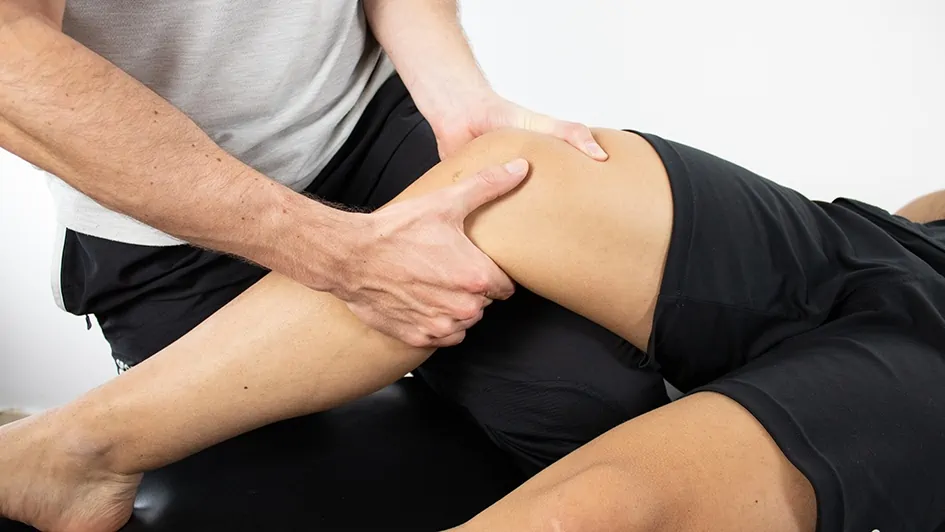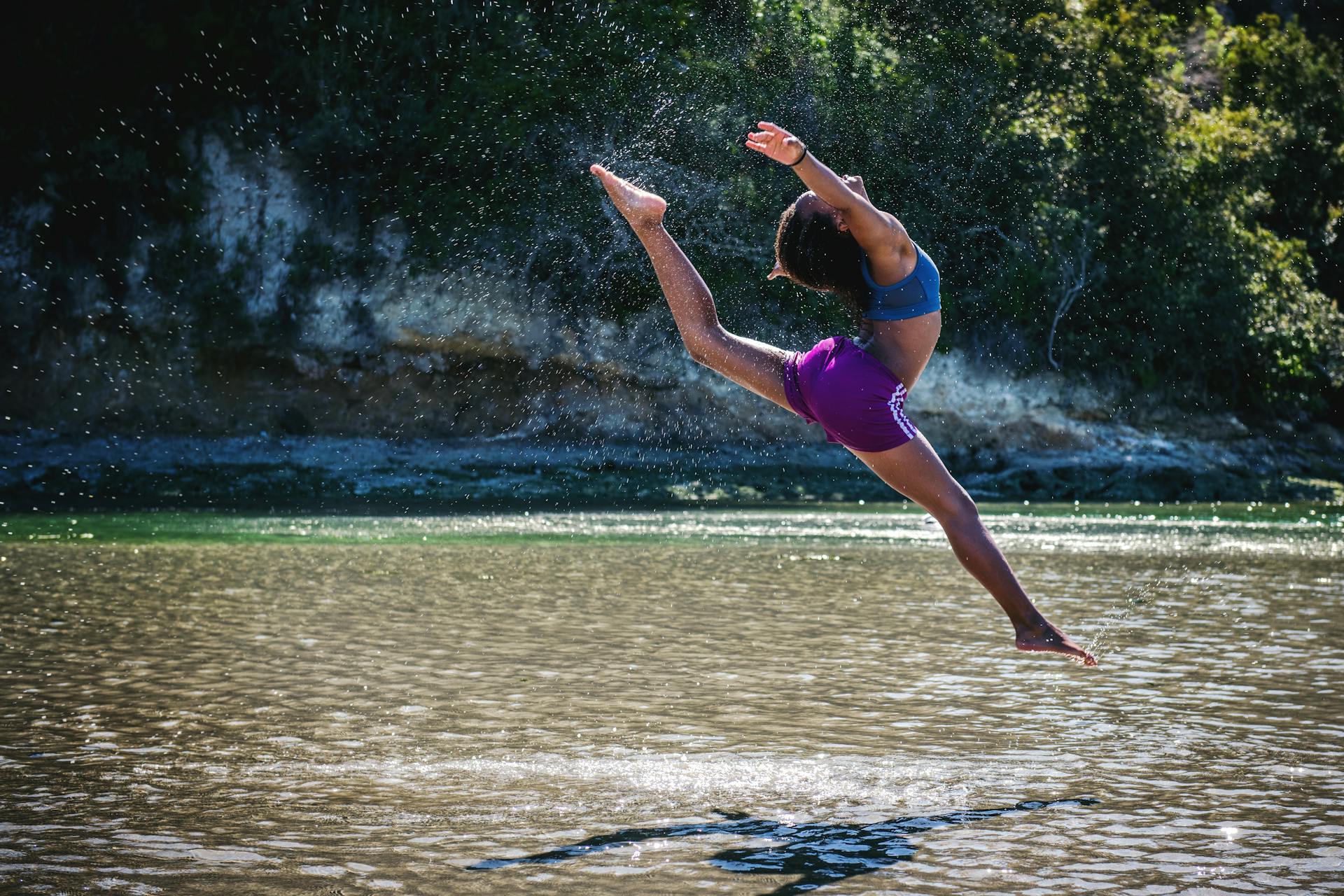Introduction
Anterior Cruciate Ligament (ACL) injuries are among the most common and potentially debilitating knee injuries, particularly in athletic and active populations. The ACL plays a critical role in stabilizing the knee joint during dynamic movements, and its injury often results in significant functional impairment. The standard of care for ACL tears, especially in young or physically active individuals, is surgical reconstruction. This procedure involves replacing the torn ligament with a graft, typically sourced from the patient’s own body (autograft), a donor (allograft) or a synthetic Graft.
The choice of graft material, surgical technique, and post-operative rehabilitation are tailored to individual needs, aiming to restore knee stability and functionality while minimizing the risk of complications. Despite advancements in surgical techniques and a deeper understanding of knee biomechanics, ACL reconstruction is not without challenges. One of the most significant concerns post-surgery is the risk of graft failure or relapse (ACL Reinjury), which refers to the re-tearing or inadequate healing of the reconstructed ligament.
ACL surgery relapse not only poses a setback in the rehabilitation process but also raises the risk of long-term knee problems, including instability, chronic pain, and the development of osteoarthritis. The implications of relapse extend beyond physical health, impacting psychological well-being, and quality of life, especially in athletes whose careers depend on optimal knee function. Furthermore, a relapsed ACL can necessitate additional surgeries, leading to increased healthcare costs and a longer road to recovery.
Understanding the factors contributing to ACL surgery relapse is crucial for orthopaedic surgeons and rehabilitation professionals. It informs better surgical decision-making, enhances post-operative care, and guides patients in their recovery journey. In essence, a focus on reducing relapse rates is pivotal in improving overall patient outcomes and ensuring long-term knee health post-ACL reconstruction.
1. Incidence and Risk Factors of ACL Surgery Relapse/ ACL Reinjury
The incidence of ACL surgery relapse represents a significant concern in the realm of orthopedic surgery, particularly given the impact of such events on patient outcomes and healthcare systems. Relapse, in this context, often denotes graft failure or re-injury post-ACL reconstruction. Understanding the incidence and risk factors associated with these relapses is crucial for developing more effective treatment protocols and patient education strategies.
1.1 Incidence of ACL Surgery Relapse
Studies have provided varying statistics on graft failure rates, painting a broad picture of the incidence of ACL surgery relapse. One comprehensive review, by Crawford et al. in 2013 (1) termed the Long-term failure of anterior cruciate ligament reconstruction study, evaluated the cumulative incidence of graft rupture and clinical failures post-reconstruction over a period exceeding 10 years. It found that the reported ACL graft rupture rate was 6.2% (173 of 2,782 patients), while clinical failure occurred in approximately 10.3% (158 of 1,532 patients). The overall cumulative failure rate was noted to be 11.9%
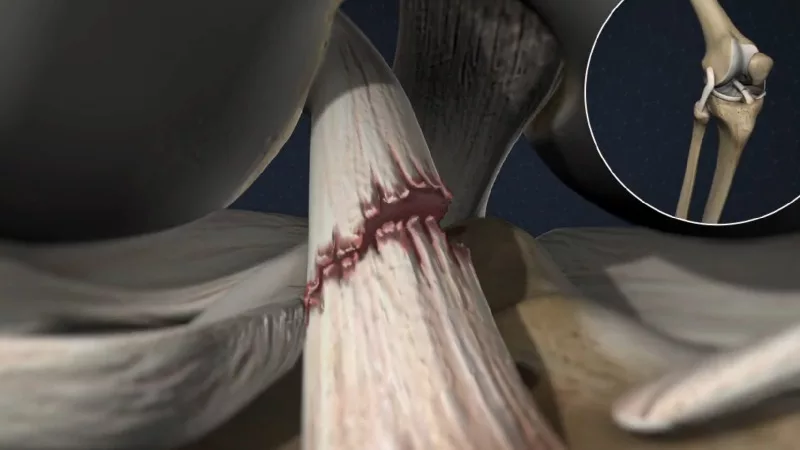
1.2 Graft Types Comparison
The choice of graft used during ACL reconstruction plays an important role in the surgery’s success and the likelihood of relapse. The 2022 Failure rates of common grafts used in ACL reconstructions study by Gerwin Haybäck (2) compared different graft types, including hamstring tendon autografts, bone-patellar tendon-bone autografts, quadriceps tendon autografts, and diverse allografts.
This study, encompassing 152,548 patients, revealed yearly graft failure rates of 1.70% for hamstring tendon autografts, 1.16% for bone-patellar tendon-bone autografts, 0.72% for quadriceps tendon autografts, and 1.76% for allografts. These findings suggest that while there are differences in failure rates among graft types, they are relatively minimal.
1.3 Risk Factors: Specific Populations
Certain populations, such as adolescents and athletes, face a higher risk of ACL surgery relapse. The 2020 study Failure Rates of Autograft and Allograft ACL Reconstruction in Patients 19 Years of Age and Younger from Cruz et al. (3) highlighted this increased risk in younger patients. It showed that allografts in pediatric and adolescent patients had a significantly higher failure rate compared to autografts, emphasizing the need for cautious use of allografts in these age groups.
Further supporting this, this 2018 20-Year Outcomes of Anterior Cruciate Ligament Reconstruction With Hamstring Tendon Autograft study (4) delved into the long-term outcomes of ACL reconstructions in adolescents versus adults. It found a striking difference in graft survival rates over 20 years, with adults having a higher rate of graft survival compared to adolescents (86% for adults vs. 61% for adolescents). This study underscores the particular vulnerability of younger patients to ACL surgery relapse and highlights the need for specialized strategies in managing their treatment and rehabilitation.
The incidence of ACL surgery relapse is a multifaceted issue influenced by factors such as the type of graft used and the patient’s age. While advancements in surgical techniques and graft selection have improved outcomes, the risk of relapse remains a significant concern, especially in younger patients and athletes. These insights underline the importance of personalized treatment plans, careful graft selection, and targeted rehabilitation protocols, especially for high-risk groups, to minimize the likelihood of relapse and ensure optimal long-term outcomes for patients undergoing ACL reconstruction.
2. Clinical Assessment and Monitoring Post-ACL Reconstruction
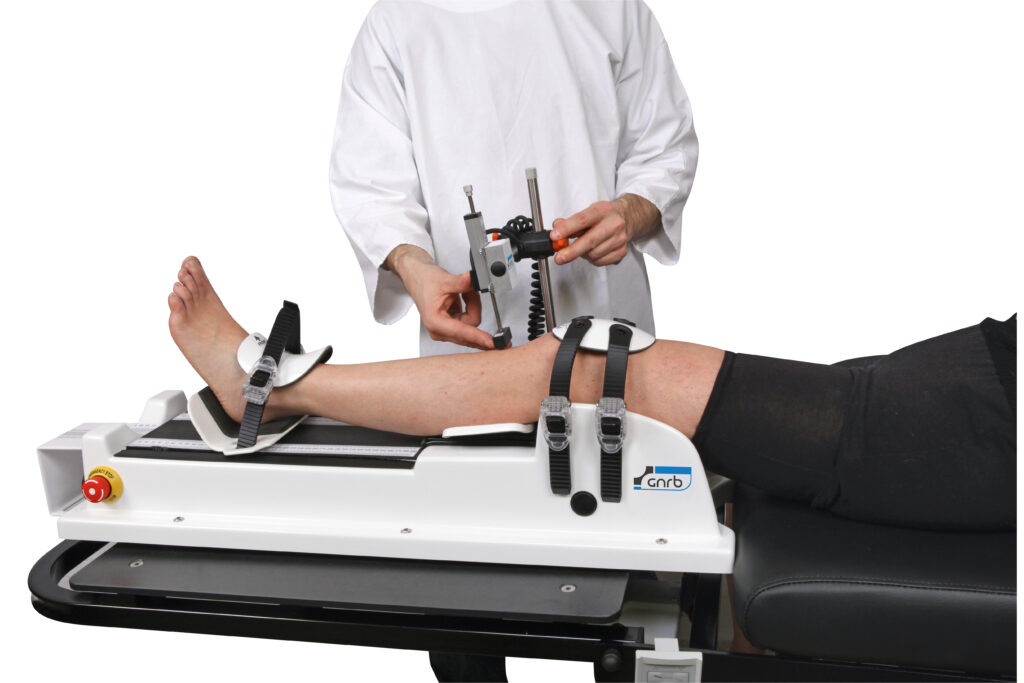
Clinical assessment post-ACL reconstruction is a cornerstone in ensuring successful patient outcomes and identifying potential relapses. Regular monitoring and evaluation are essential not only during the immediate postoperative period but also throughout the long-term rehabilitation process. This assessment typically involves a combination of physical examinations, patient-reported outcomes, and objective testing.
A crucial aspect of clinical assessment is the evaluation of knee laxity, which is a key indicator of graft integrity and functionality. Excessive laxity post-reconstruction can signal graft failure or loosening, necessitating prompt intervention. To accurately assess knee laxity, clinicians employ specialized tools like arthrometers, with the GNRB and Dyneelax being notable examples.
The GNRB arthrometer is a device designed to objectively measure the anterior tibial translation and thereby assess the anteroposterior laxity of the knee. It utilizes a system that applies a controlled force on the tibia, while sensors record the tibia’s displacement relative to the femur. This data is crucial in comparing the operated knee with the contralateral uninjured knee, providing valuable information about the success of the reconstruction and the integrity of the graft.
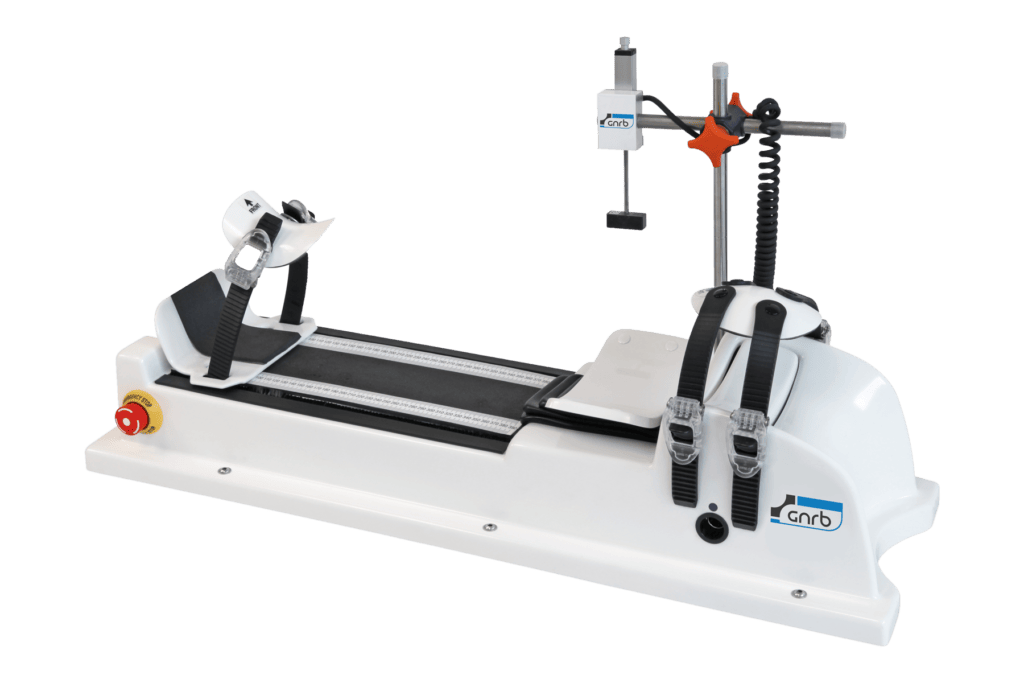
Similarly, the Dyneelax arthrometer serves as an important tool in post-ACL reconstruction assessment. It operates on a similar principle, measuring the translation and the rotation of the tibia under a specified loads and torques. The precision and objectivity offered by Dyneelax make it an invaluable resource in both clinical and research settings, aiding in the early detection of complications and graft failures.
The use of these arthrometers in clinical practice has several benefits. Firstly, they provide quantitative data that can guide clinical decision-making, supplementing the subjective assessments typically made during physical examinations. This data is particularly useful in monitoring the progress of rehabilitation and determining when it is safe for patients to return to their normal activities or sports. Secondly, the objective measurements from arthrometers help in setting standardized criteria for post-operative care, thereby aiding in the development of tailored rehabilitation protocols.
Recent studies have underscored the importance of accurately assessing knee laxity, a critical indicator of graft integrity and function. A 2016 study by Semay-France et al. (5) utilized the GNRB arthrometer to analyze the evolution of tibiofemoral anterior laxity during the return to sports post-ACL reconstruction. They found significant changes in anterior-posterior laxity between 9 and 12 months postoperatively, emphasizing the need for cautious return to sport decisions based on joint laxity analysis.

The relevance of the GNRB arthrometer was further highlighted in a 2017 study by Nouveau-Robert-Viel (6), which investigated the influence of early rehabilitation on the final stiffness of the ACL graft. This study employed dynamic laximetry using the GNRB to measure graft laxity and compliance, establishing a link between aggressive rehabilitation and increased compliance of the graft, which can influence clinical stability.
Moreover, a 2019 study by Pouderoux et al. (7) reported on the evolution of joint laxity and graft compliance post-ACL reconstruction using the GNRB arthrometer. They observed significant increases in laxity and compliance between the first and ninth postoperative months, suggesting a phase of relative graft weakness during this period. This finding underscores the importance of monitoring joint laxity and graft compliance as part of the decision-making process for returning to pivoting or contact sports.
Additionally, the 2023 Forelli study (8) emphasized the utility of robotic laximeters in assessing graft laxity. The study noted the importance of accurate graft laxity assessment in making return-to-play (RTP) decisions, considering the long graft healing process and the risks associated with excessive tibial anterior translation. The robotic laximeter was lauded for providing objective data, including dynamic elongation curves and displacement differentials, critical for assessing functional instability risks
Moreover, these devices have a significant role in research. Data gathered from GNRB and Dyneelax assessments contribute to a better understanding of the biomechanics of ACL-reconstructed knees. This understanding is crucial in improving surgical techniques, refining rehabilitation protocols, and ultimately, in reducing the incidence of ACL surgery relapse.
In summary, clinical assessment, particularly the evaluation of knee laxity using arthrometers like GNRB and Dyneelax, is indispensable in the post-operative care of ACL reconstruction patients. These tools not only aid in the early detection of graft failure but also contribute to the continual improvement of treatment strategies to avoid graft failures, ensuring better patient outcomes and reduced relapse rates.
3. Surgical Techniques and Their Impact on Relapse Rates
The likelihood of ACL relapse is intricately linked to the surgical techniques employed during reconstruction. Over the years, these techniques have evolved, significantly impacting relapse rates and overall patient outcomes.
Different surgical approaches, such as the use of various graft types and the methods of graft fixation, play a pivotal role in the success of ACL reconstruction. The choice between autografts (tissue from the patient’s body) and allografts (donor tissue), for example, can affect the stability and healing of the knee. Additionally, the surgical technique for tunnel placement in the bone, crucial for graft positioning, can influence the knee’s biomechanics and, consequently, the risk of relapse. If you want to learn more about ACL Reconstruction surgery, we highly recommend that you read our other article dedicated to it: The Complete Guide to ACL Reconstruction Surgery: From Injury Diagnosis to Recovery
One specific area of interest is multiple-revision ACL reconstruction. In these complex cases, where patients undergo multiple surgeries due to repeated failures, the choice of technique becomes even more critical. A 2023 study focused on “Failure Rates and Complications After Multiple-Revision ACL Reconstruction” (9) sheds light on this aspect. It compared the over-the-top (OTT) and transportal drilling (TD) techniques in patients undergoing multiple-revision ACL reconstructions.
Despite the challenging nature of these cases, the study found no significant differences in complication or graft failure rates between the two techniques, suggesting that both OTT and TD are viable options in revision scenarios. However, the high failure rates in multiple-revision cases underscore the importance of getting the technique right the first time
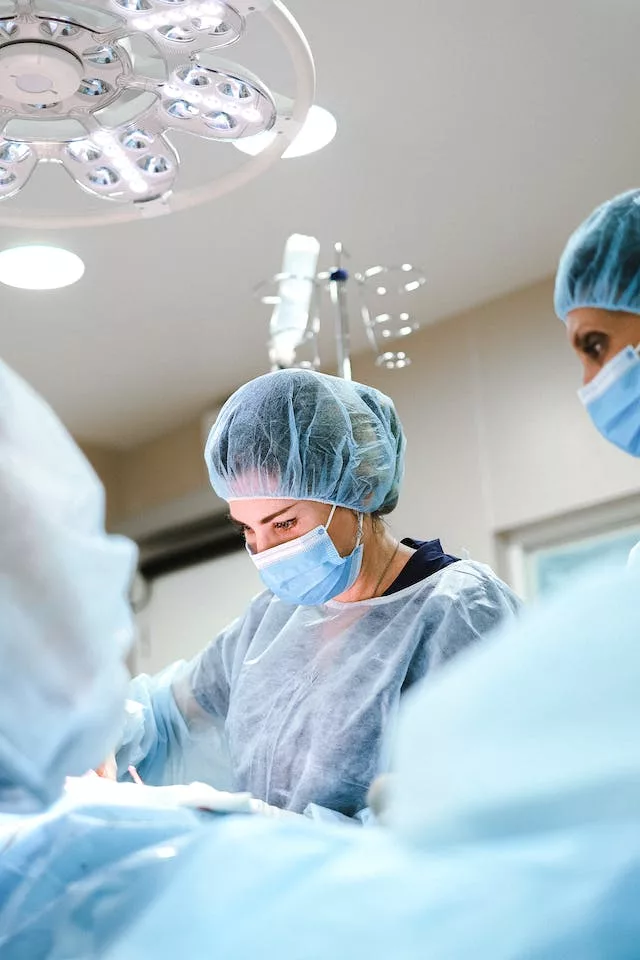
The evolution of surgical methods over the years has been significant. Earlier techniques, which often involved non-anatomic reconstructions, have given way to more anatomically precise methods. These modern techniques aim to more closely replicate the knee’s natural anatomy, thereby reducing the stress on the graft and improving the overall stability of the knee. Innovations such as computer-assisted surgery and the use of bioabsorbable materials for graft fixation have also contributed to improved outcomes.
Another advancement is the increasing precision in tunnel placement during surgery. Accurate placement of tunnels is crucial as it ensures the graft is positioned to mimic the natural ligament’s function as closely as possible. Misplaced tunnels can lead to abnormal knee kinematics and increased graft strain, potentially leading to higher relapse rates.
In conclusion, the choice of surgical technique in ACL reconstruction, especially in complex cases requiring multiple revisions, has a profound impact on the likelihood of relapse. The continuous evolution and refinement of these techniques, with a focus on anatomical precision and individualized approaches, have been instrumental in reducing relapse rates and enhancing the long-term success of ACL reconstructions.
4. Long-term Outcomes and Patient Management
The long-term outcomes of ACL reconstruction are critical in patient care, significantly influencing recovery and the minimization of relapse risk. A key study on the long-term rate of graft failure after ACL reconstruction in 2017 (10) provides essential insights, reporting a graft survival rate of 99.7% at 1 year, declining to 91% at 25 years. This data underscores the procedure’s effectiveness while also highlighting the gradual increase in failure rates over time, especially in younger patients. This finding necessitates tailored management strategies across different age groups.
Patient management post-ACL reconstruction involves a comprehensive approach, including rehabilitation, regular follow-ups, and patient education, aiming to restore knee function, prevent complications, and reduce relapse risk.
Rehabilitation is pivotal in the recovery process. It should start immediately post-surgery and continue for several months, tailored to individual progress. Arthrometers are excellent tools to use and enable precise tailoring of treatments for each patients. Early stages focus on reducing swelling, pain management, and restoring motion. Later stages incorporate strength training, proprioception exercises, and sport-specific drills for athletes. This progression is crucial to avoid overloading the graft, which can increase relapse risk.

Regular follow-up appointments are essential for monitoring progress and addressing issues. These include clinical assessments, imaging tests, and functional evaluations to assess knee stability and strength. Follow-ups also allow clinicians to adjust rehabilitation plans based on recovery progress.
Patient education is another key aspect. Informing patients about adherence to rehabilitation, understanding recovery limitations, and recognizing complication signs can empower them in their recovery journey.
There’s a growing emphasis on individualized patient management. Factors like age, activity level, and sports involvement should guide post-operative care and rehabilitation, enhancing long-term outcomes.
Moreover, studies like the 2017 research on ACL grafts compliance during time (6) have highlighted the impact of rehabilitation and daily stress on the ligament graft’s stiffness over time, emphasizing the importance of tailored rehabilitation to ensure knee stability. Similarly, the 2019 study by Pouderoux et al. (7) on joint laxity and graft compliance evolution post-ACL reconstruction using the GNRB arthrometer further supports the need for careful monitoring during rehabilitation to inform return-to-sport decisions.
Managing patients post-ACL reconstruction requires a multifaceted approach, encompassing structured rehabilitation, regular follow-ups, and patient education. By focusing on these components and considering individual patient needs, healthcare providers can optimize recovery, minimize relapse risk, and ensure the best possible long-term outcomes.
5. The Role of Delay in Surgery and Its Effects on Relapse
The timing of ACL reconstruction surgery is a critical factor that significantly influences the rate of relapse and overall patient outcomes. The impact of delaying surgery beyond the immediate aftermath of injury is a subject of considerable research and debate.
A notable 2021 study examining the effects of delaying ACL reconstruction (11) beyond 6 months from the injury provides valuable insights into this issue. The study found that patients who underwent surgery more than six months after the injury experienced reduced likelihood to achieve patient-acceptable symptomatic states (PASS) and a greater likelihood of undergoing revision ACL reconstruction. This suggests that delayed surgery may lead to inferior outcomes and an increased risk of relapse

The decision to delay ACL surgery often hinges on factors like the severity of the injury, comorbid conditions, and patient-specific considerations such as age, activity level, and overall health. In some cases, delay is strategic, allowing for prehabilitation – exercises aimed at improving knee strength and motion before surgery. Prehabilitation is beneficial for patients with significant swelling or limited motion. However, finding the right balance between adequate prehabilitation and unnecessary delay is crucial.
One reason why delay may impact relapse rates is the potential for additional knee joint damage. Prolonged instability can lead to secondary injuries like meniscal tears, which may complicate surgery and affect long-term reconstruction integrity. Additionally, the longer a patient experiences instability, the greater the risk of developing compensatory movement patterns, which can challenge post-surgery rehabilitation.
The psychological impact of delayed surgery is also significant. Extended periods of inactivity and uncertainty about knee stability can decrease motivation and compliance with post-surgery rehabilitation protocols, crucial for preventing relapse.
However, it’s important to note that the decision regarding the timing of ACL reconstruction is highly individualized. Factors such as the patient’s health, lifestyle, personal preferences, and the surgeon’s expertise all play a role in determining the optimal time for surgery.
6. Future Directions in ACL Relapse Prevention

The future of ACL relapse prevention lies in the realm of ongoing research and the development of innovative interventions. As our understanding of knee biomechanics and ACL reconstruction evolves, so too does the potential for reducing the incidence of surgery relapse.
Current research is increasingly focusing on personalized medicine approaches. These include the development of surgical techniques and rehabilitation protocols tailored to individual patient characteristics such as age, activity level, and anatomical differences. There is a growing recognition that one-size-fits-all approaches may not be the most effective in preventing relapse, and personalization could be key in enhancing outcomes.
Another area of research is the exploration of biological enhancements to surgery. This includes the use of growth factors, stem cells, and other biologics that might improve graft healing and integration. Such advancements could significantly reduce the risk of graft failure and improve the overall strength and stability of the reconstructed ligament.
The integration of advanced imaging techniques and biomechanical analysis in both the preoperative and postoperative phases is also a promising area. More sophisticated imaging methods could provide better insights into graft healing, knee joint kinematics, and potential complications. Similarly, biomechanical analysis, both in laboratory settings and through wearable technology, could offer valuable data on the functional aspects of the knee post-reconstruction.
Furthermore, there is a need for more comprehensive longitudinal studies that track patients over extended periods. Such studies would provide valuable data on the long-term outcomes of different surgical techniques and rehabilitation approaches, contributing to a deeper understanding of factors that influence relapse rates.
Technological advancements in surgical equipment and rehabilitation tools are also expected to play a significant role in future ACL relapse prevention strategies. Innovations in surgical instrumentation, for instance, could allow for more precise and less invasive procedures, while advanced rehabilitation equipment could provide better support for patients in their recovery journey.
Conclusion
The field of ACL reconstruction and relapse prevention has made considerable strides, yet it continues to be an area requiring ongoing research and development. This article has underscored several key findings crucial for understanding and improving the outcomes of ACL surgery.
First, the incidence of ACL surgery relapse varies and is influenced by factors like surgical techniques, timing of the surgery, and patient-specific characteristics. While ACL reconstructions generally boast high success rates, a significant subset of patients experience complications or relapse. The choice of graft, surgical precision, and postoperative rehabilitation are pivotal in determining the long-term success of the procedure.
Second, the timing of surgery plays a critical role. Delaying ACL reconstruction beyond six months can lead to inferior outcomes and increase the likelihood of revision surgery. Balancing prehabilitation with timely surgical intervention is essential for optimal recovery.
Additionally, personalized treatment approaches are emerging as key in reducing relapse rates. Tailoring care to each patient’s unique physiological and lifestyle factors is proving more effective than generic solutions.
The integration of advanced tools like arthrometers in post-operative assessments offers objective and comprehensive evaluations of graft integrity and knee function. These technologies, along with anticipated advancements, hold significant potential for improving diagnostics and treatment strategies.
Continuous research is vital in advancing our understanding of ACL reconstruction and relapse prevention. Future studies focusing on long-term outcomes, personalized medicine, biological enhancements, and technological innovations are crucial. Embracing and investing in ongoing research will be key to reducing the incidence of ACL surgery relapse and enhancing patient outcomes, ensuring that individuals can return to their pre-injury levels of activity with confidence and stability.
Medical References (Link In DOI)
- Crawford SN, Waterman BR, Lubowitz JH. (2013). Long-term failure of anterior cruciate ligament reconstruction. Arthroscopy, 29(9), 1566-71. DOI: 10.1016/j.arthro.2013.04.014
- Haybäck G, Raas C, Rosenberger R. (2022). Failure rates of common grafts used in ACL reconstructions: a systematic review of studies published in the last decade. Arch Orthop Trauma Surg, 142(11), 3293-3299. DOI: 10.1007/s00402-021-04147-w
- Cruz AI Jr, Beck JJ, Ellington MD, Mayer SW, Pennock AT, Stinson ZS, VandenBerg CD, Barrow B, Gao B, Ellis HB Jr. (2020). Failure Rates of Autograft and Allograft ACL Reconstruction in Patients 19 Years of Age and Younger: A Systematic Review and Meta-Analysis. JB JS Open Access, 5(4), e20.00106. DOI: 10.2106/JBJS.OA.20.00106
- Salmon LJ, Heath E, Akrawi H, Roe JP, Linklater J, Pinczewski LA. (2018). 20-Year Outcomes of Anterior Cruciate Ligament Reconstruction With Hamstring Tendon Autograft: The Catastrophic Effect of Age and Posterior Tibial Slope. Am J Sports Med, 46(3), 531-543. DOI: 10.1177/0363546517741497
- Semay B, Rambaud A, Philippot R, Edouard P. (2016). Evolution of the anteroposterior laxity by GnRB at 6 9 and 12 months post-surgical anterior cruciate ligament reconstruction. Annals of Physical and Rehabilitation Medicine, 59(Suppl.), e15–e23. DOI: 10.1016/j.rehab.2016.07.045.
- Nouveau S, Robert H, Viel T. (2017). ACL Grafts Compliance During Time: Influence of Early Solicitations on the Final Stiffness of the Graft after Surgery. Journal of Orthopedic Research and Physiotherapy, 3: 035. DOI: 10.24966/ORP-2052/100035
- Pouderoux T, Muller B, Robert H. (2019). Joint laxity and graft compliance increase during the first year following ACL reconstruction with short hamstring tendon grafts. Knee Surgery Sports Traumatology Arthroscopy. DOI: 10.1007/s00167-019-05711-z.
- Forelli F, Le Coroller N, Gaspar M, Memain G, Kakavas G, Miraglia N, Marine P, Maille P, Hewett TE, Rambaud AJM. (2023). Ecological and Specific Evidence-Based Safe Return To Play After Anterior Cruciate Ligament Reconstruction In Soccer Players: A New International Paradigm. IJSPT. DOI: 10.26603/001c.73031
- Özbek EA, Winkler PW, Nazzal EM, Zsidai B, Drain NP, Kaarre J, Sprague A, Lesniak BP, Musahl V. (2023). Failure Rates and Complications After Multiple-Revision ACL Reconstruction: Comparison of the Over-the-Top and Transportal Drilling Techniques. Orthop J Sports Med, 11(7):23259671231186972. DOI: 10.1177/23259671231186972
- Sanders TL, Pareek A, Hewett TE, Levy BA, Dahm DL, Stuart MJ, Krych AJ. (2017). Long-term rate of graft failure after ACL reconstruction: a geographic population cohort analysis. Knee Surg Sports Traumatol Arthrosc, 25(1), 222-228. DOI: 10.1007/s00167-016-4275-y.
- Forsythe B, Lu Y, Agarwalla A, Ezuma CO, Patel BH, Nwachukwu BU, Beletsky A, Chahla J, Kym CR, Yanke AB, Cole BJ, Bush-Joseph CA, Bach BR, Verma NN. (2021). Delaying ACL reconstruction beyond 6 months from injury impacts likelihood for clinically significant outcome improvement. Knee, 33, 290-297. DOI: 10.1016/j.knee.2021.10.010





